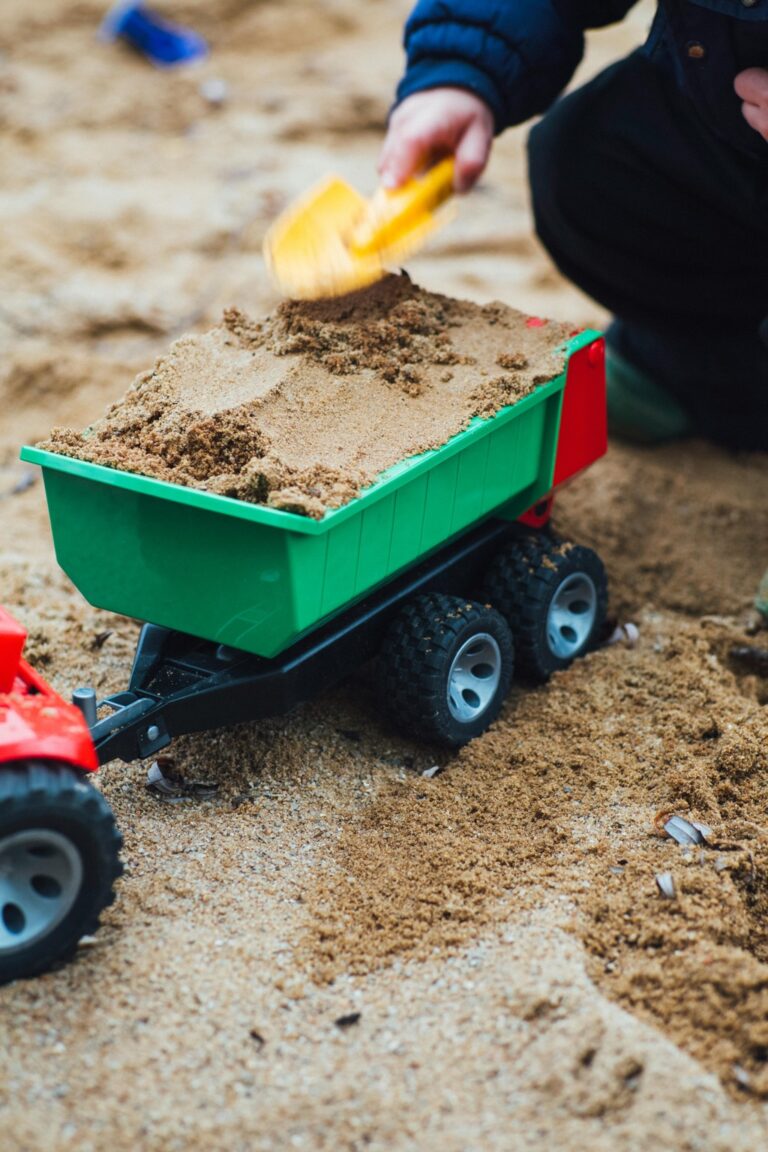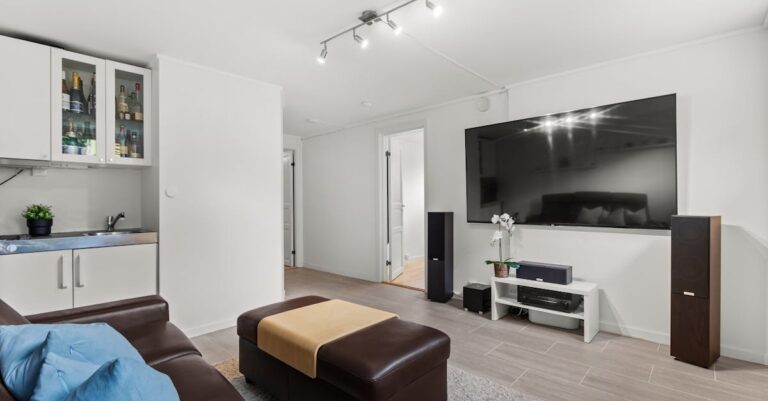7 Tips for Choosing the Best Beach Tent Location That Locals Keep Secret
Discover 7 expert tips for choosing the perfect beach tent location, from monitoring tides to finding wind protection, ensuring your day at the shore is comfortable, safe, and enjoyable.
Planning a beach day requires more than just sunscreen and towels—choosing the perfect spot for your beach tent can make all the difference between a relaxing oasis and a frustrating experience. The right location protects you from harsh elements while providing convenience and comfort throughout your seaside adventure.
Stay protected from the sun with Neutrogena Ultra Sheer SPF 70 Sunscreen. Lightweight, non-greasy, and water-resistant formula.
Finding that ideal tent spot involves considering factors like tides, wind direction, and proximity to facilities—decisions that can significantly impact your overall beach enjoyment. With these seven practical tips, you’ll be equipped to select the optimal beach tent location that enhances your coastal experience.
Disclosure: As an Amazon Associate, this site earns from qualifying purchases. Thank you!
1. Finding the Perfect Sun-to-Shade Ratio
The balance between sun exposure and shade is crucial for an enjoyable beach day. The right amount of each can make the difference between a comfortable outing and one that ends early due to sunburn or overheating.
Tracking the Sun’s Path
The sun moves from east to west, dramatically affecting your tent’s exposure throughout the day. Position your tent with the door facing east for morning warmth and afternoon shade. Check the sun’s position at setup time and visualize its path to anticipate how shadows will shift during your stay.
Choosing Morning vs Afternoon Exposure
Morning sun tends to be gentler and less intense than afternoon rays, making eastern-facing positions ideal for early beachgoers. If you’re planning an afternoon visit, select a spot with natural afternoon shade from dunes or vegetation. Consider your skin sensitivity and planned activities when deciding whether morning or afternoon sun exposure works best for your beach setup.
2. Assessing Wind Direction and Intensity
Wind can make or break your beach experience, transforming your tent from a sanctuary to a windblown mess in minutes. Understanding how wind behaves at your chosen beach location is crucial for tent stability and comfort.
Identifying Natural Wind Barriers
Look for natural windbreaks like dunes, cliffs, or rock formations that can shield your tent. Position yourself downwind of these barriers for maximum protection. Large boulders or seaside vegetation can significantly reduce wind impact, creating a microclimate of calm within the otherwise gusty beach environment.
Anchoring Strategies for Windy Conditions
Always face your tent’s narrowest side into the wind to minimize resistance. Use all available anchor points with sand stakes or bags filled with sand at each corner. For extreme conditions, dig 6-8 inches into the sand before placing stakes, as deeper anchoring provides substantially more holding power against sudden gusts.
3. Evaluating Ground Stability and Terrain
Sand Type Considerations
The type of sand beneath your tent directly impacts your comfort and stability. Soft, powdery sand might feel luxurious underfoot but creates an unstable foundation for your tent. Look for slightly packed, damp sand that’s firm enough to hold stakes but not so wet that water seeps through your tent floor. Avoid areas with excessive shells or debris that could puncture your tent bottom.
Avoiding Uneven Surfaces
Uneven terrain can transform a relaxing beach day into an uncomfortable experience. Before setting up, remove any rocks, shells, or driftwood from your chosen spot. Scan for subtle slopes that might cause you to roll while sleeping or relaxing. For maximum comfort, find naturally flat areas or spend a few minutes leveling your spot with a small shovel or edge of a frisbee.
Dig and plant with ease using the Fiskars Ergo Trowel. Its durable cast-aluminum head powers through tough soil, while the ergonomic handle reduces fatigue.
4. Maintaining Safe Distances from Water
Selecting the right distance from the waterline isn’t just about convenience—it’s a crucial safety consideration for your beach setup. Positioning your tent too close to the water can quickly transform a relaxing day into a stressful situation.
Understanding Tide Patterns
Always check local tide schedules before setting up your beach tent. High tides can advance up to 50-100 feet beyond the morning waterline, potentially flooding your entire setup. Position your tent behind the high tide mark, typically indicated by a line of seaweed, driftwood, or a noticeable change in sand color and texture. Remember that spring tides (occurring during full and new moons) bring exceptionally high water levels.
Flood Zone Awareness
Even on seemingly calm days, unexpected waves can surge much farther up the beach than the regular waterline. Keep your tent at least 15-20 feet behind any wet sand to protect against sudden water rushes. For beaches with steep drop-offs or known for strong waves, increase this distance to 30-40 feet. Children’s play areas should always be established between your tent and the water, never on the opposite side, allowing for easier supervision.
5. Prioritizing Privacy and Space Factors
Establishing Comfortable Boundaries
Finding the perfect balance between privacy and sociability starts with strategic tent placement. Position your beach tent at least 10-15 feet away from other beachgoers to create a respectful buffer zone. Use natural landmarks like large rocks or driftwood to define your space without appearing territorial. Remember that unwritten beach etiquette suggests leaving room for foot traffic between setups, especially near popular walking paths.
Navigating Crowded Beach Environments
On busy beaches, arrive early to secure a spot with natural spacing advantages like small dunes or vegetation clusters. Set up near families with similar-aged children for compatible noise levels and play opportunities. Alternatively, position yourself near the beach’s edges where foot traffic naturally decreases. Avoid high-traffic zones like volleyball courts, beach access points, and areas directly in front of lifeguard stations.
6. Considering Proximity to Beach Amenities
Balancing Convenience and Tranquility
Strategic positioning near beach amenities can transform your day at the shore. Situate your tent within a 3-5 minute walk from restrooms and food stands for convenience without sacrificing serenity. This middle-ground approach lets you enjoy quiet relaxation while keeping necessary facilities accessible when you need them.
Accessing Facilities and Services
Map out essential amenities before selecting your tent location. Position yourself within reasonable distance of restrooms, shower stations, and food concessions to minimize long walks across hot sand. Remember that spots directly adjacent to these high-traffic facilities often experience more noise and foot traffic, so aim for that sweet spot—close enough for convenience yet far enough for peace.
7. Respecting Beach Rules and Regulations
Understanding Local Beach Policies
Beach rules vary significantly between locations, with regulations on tent size, setup times, and permitted areas. Check the official beach website or information boards before your trip for specific guidelines. Many popular beaches restrict large canopy tents or limit setup to designated zones, especially during peak season. Familiarize yourself with local ordinances to avoid potential fines or being asked to relocate.
Environmental Protection Considerations
Always position your tent behind vegetation lines or marked dune protection areas to preserve fragile coastal ecosystems. Many beaches implement sea turtle nesting protection zones that restrict tent placement during hatching seasons (typically May-October). Remove all trash and personal items when leaving, and never anchor your tent to vegetation. Respecting these environmental considerations helps maintain beach access for future visitors while protecting critical coastal habitats.
Conclusion: Enjoying Your Perfect Beach Setup
Selecting the ideal spot for your beach tent transforms an ordinary day by the sea into a memorable experience. By factoring in tides wind direction ground stability and proximity to amenities you’ll create a comfortable home base for your beach adventures.
Remember that the perfect location balances practical needs with personal preferences. Whether you’re seeking tranquility family-friendly spaces or convenient access to facilities these tips will help you make informed decisions for your setup.
With your tent strategically positioned you can focus on what truly matters – making wonderful beach memories with loved ones. Next time you head to the shore you’ll approach your tent setup with confidence knowing exactly how to choose the best location for your day of sun sand and relaxation.
Frequently Asked Questions
What factors should I consider when selecting a beach tent location?
Consider the tide schedule, wind direction, ground stability, proximity to facilities, privacy needs, and local regulations. Check the sun’s path to find the ideal sun-to-shade ratio for your comfort. Position your tent behind the high tide mark, look for natural wind barriers, and ensure you’re on stable ground. Balance convenience with tranquility by setting up within walking distance of amenities while maintaining enough distance for peace.
How does the sun’s path affect my beach tent positioning?
The sun moves from east to west throughout the day, affecting your tent’s exposure. Position your tent with the door facing east for morning warmth and afternoon shade. Consider your personal sun sensitivity—morning sun is gentler than the intense afternoon rays. This strategic positioning helps maximize comfort and minimize sunburn risk while allowing you to adjust your shade needs as the day progresses.
What’s the best way to secure a beach tent in windy conditions?
Face the narrowest side of your tent into the wind to reduce resistance. Use all available anchor points with sand stakes or bags filled with sand. Anchor deeper (8-10 inches) for better stability against sudden gusts. Look for natural wind barriers like dunes or cliffs, and position your tent downwind of these features. Regular checks on anchoring throughout the day will ensure continued stability.
How can I find stable ground for my beach tent?
Look for slightly packed, damp sand that can hold stakes without being too wet. Soft, powdery sand feels comfortable but creates an unstable foundation. Avoid uneven surfaces by removing rocks, shells, or driftwood before setup. Seek naturally flat areas or manually level your chosen spot. Test the ground by walking on it—if your feet sink deeply, consider finding a more stable location.
How far should I set up my tent from the waterline?
Position your tent behind the high tide mark, typically indicated by seaweed lines or changes in sand texture. Check local tide schedules before setting up. A good rule is staying at least 15-20 feet from wet sand, with greater distances for beaches with steep drop-offs or strong waves. For families, establish children’s play areas between the tent and water for easier supervision.
How much space should I leave between my tent and other beachgoers?
Position your tent at least 10-15 feet away from other groups to create a respectful buffer zone. Use natural landmarks to define personal space. On crowded beaches, arrive early to secure spots with natural spacing advantages. Consider setting up near families with similar-aged children for compatible noise levels. Avoid high-traffic zones near beach entrances, volleyball courts, or popular swimming areas.
What beach regulations should I be aware of when setting up a tent?
Familiarize yourself with local beach policies regarding tent size limitations, permitted setup times, and designated tent areas. Some beaches prohibit certain tent types or restrict setups during peak hours. Position your tent behind vegetation lines and respect marked zones for wildlife protection, especially sea turtle nesting areas. Always follow the “leave no trace” principle by removing all trash and personal items when you leave.
How close should I be to beach amenities?
Aim for a location within a 3-5 minute walk from restrooms and food stands, balancing convenience with tranquility. Map out essential amenities before selecting your spot. Position your tent far enough from high-traffic amenity areas to avoid noise and foot traffic but close enough for practical access when needed. Consider your group’s specific needs—families with young children may prioritize bathroom proximity over other factors.








